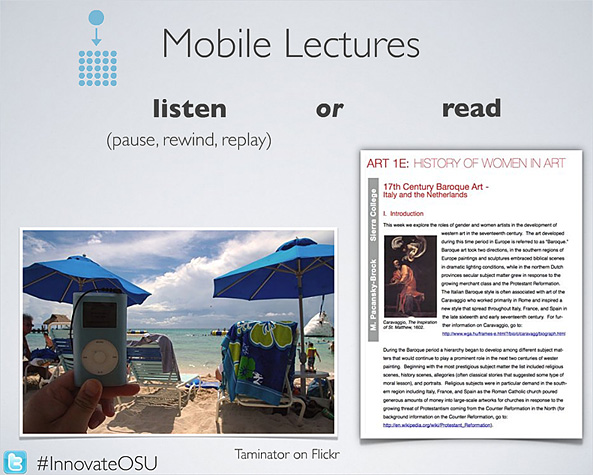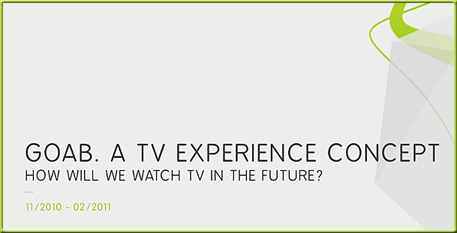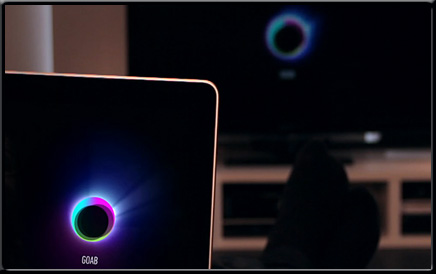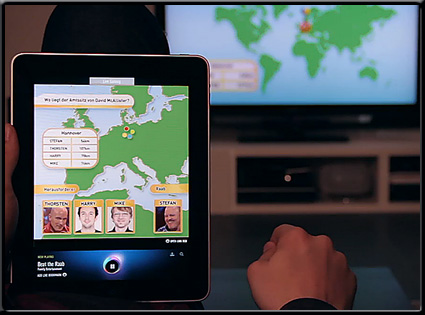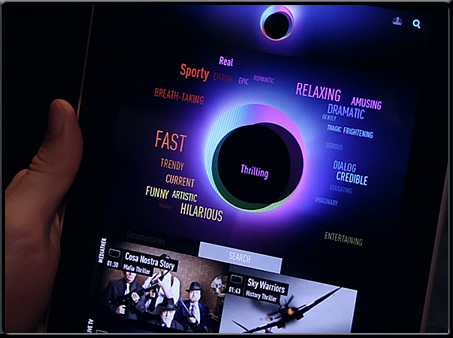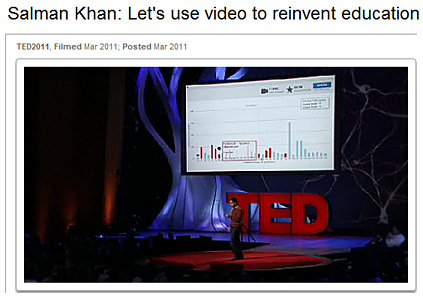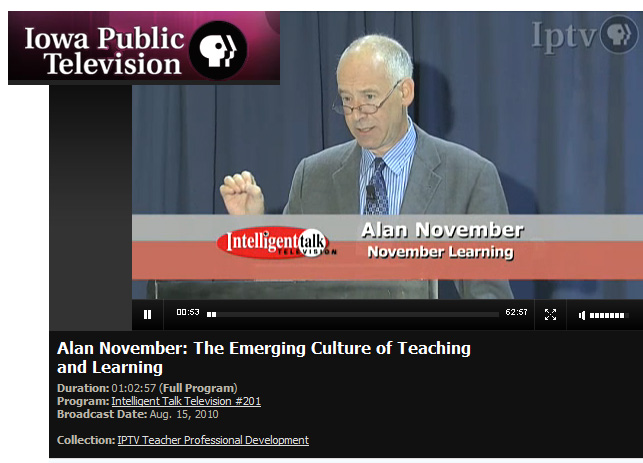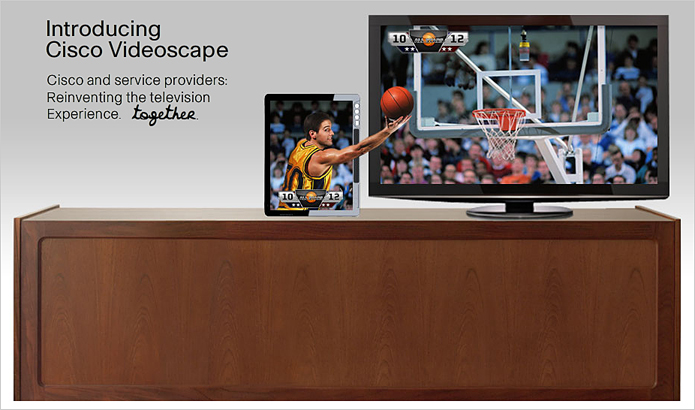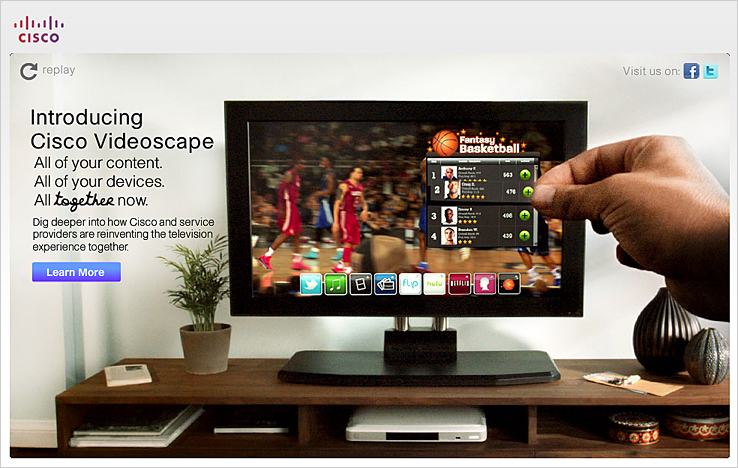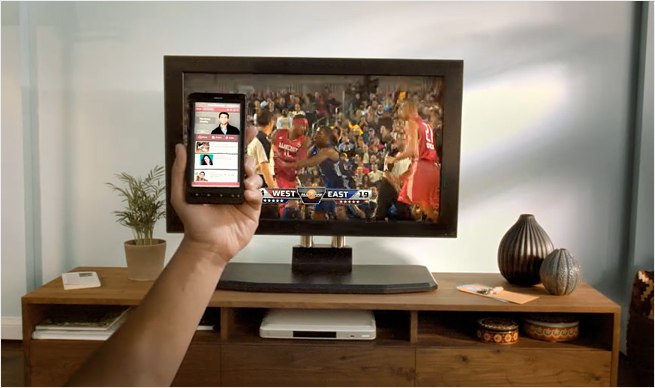Created by Knewton and Column Five Media
7 stories from educators about teaching in the flipped classroom — from emergingedtech.com by K. Walsh
Also see:
Some items re: the flipped classroom from John R. Sowash, M.Ed
Clintondale High cuts freshman failure rates with flipped classes — fromConverge.com by Tanya Roscorla (Detroit, MI, USA)
Excerpt:
In an urban school outside Detroit, more than half of freshmen failed English in fall 2009.
Along with failing classes, freshmen students got in trouble. A lot. That semester, principals at Clintondale High School dealt with 736 discipline cases for 165 students.
A year later, the scene changed.
Of 165 freshmen, only 19 percent failed English. Math classes saw similar results, going from 44 to 13 percent. And both science and social studies failure rates dropped too.
3 keys to a flipped classroom — from pairadimes.davidtruss.com by David Truss
Excerpt:
First and foremost, this is just ONE teaching strategy. It’s a good one. It isn’t the only one. I don’t know any teachers that are both one trick ponies and also good teachers. Add this trick to your repertoire, don’t make it your repertoire. Secondly, consider how these points, and related questions, can help improve your flipped classroom.
I’m not saying ‘don’t use a flipped classroom’, I’m just saying, ‘be thoughtful about how you use it!’
Some resources from Flipping the classroom — from learningconversations.co.uk by Mark Berthelemy
- Donald Clark – flip the classroom, every teacher should do this
- Maryna Badenhorst – To flip or not to flip (an excellent analysis)
- Karl Fisch – We see this as the future of higher education
- Salman Khan on TED Talks – Let’s use video to reinvent education
From DSC:
…and I would add the people who I saw who first started this new pedagogical practice (at least here in the U.S.)
- The Vod Couple — from TheJournal.com by Dian Schaffhauser — 08/01/09
High school chemistry teachers Aaron Sams and Jonathan Bergmann have overturned conventional classroom instruction by using video podcasts to form the root of a new learning model.
THUMBING through an issue of MacWorld a few years ago, Aaron Sams was struck by an article about an application called ProfCast that allows instructors to record live classroom lessons on a Mac. He brought the story to the attention of his fellow Woodland Park High School chemistry teacher, Jonathan Bergmann. The two men both saw that the ability to capture their daily lecture as a video podcast– or vodcast– and then allow students to view the recording on their own schedule later that evening could be the solution to a nettlesome yet unavoidable problem they were facing.
The Fisch Flip in Michigan: Dale Eizenga on flipping traditional lecture and homework routines — from singaporeeducationdirectory.com
Excerpt:
Today I had the opportunity to spend time visiting with teachers and students at Holland Christian Schools in Holland, Michigan. One highlight of my day was the following five minutes of sharing by Holland Christian Schools’ chemistry teacher Dale Eizenga. Dale explained how access to a variety of technology resources has enabled him to flip the traditional in-class lecture and at-home assignment model of learning. Using software and websites, Dale records many lessons for students and makes those screencast videos available online and via the school’s podcast channel.
Several things are notable here. First, Dale didn’t read about Jonathan Bergmann and Aaron Sams, or Karl Fisch, online or in print. He stumbled upon this instructional model when his school provided all teachers and students with a robust digital learning environment. That not only includes access to laptops (for everyone in grades 6-12) but also an online learning management system (Moodle,) robust digital curriculum resources, school-supported options for sharing videos online, AND certified educators supporting technology integration. There are a lot of ingredients to this situation, and that’s critical to understand.
Secondly, Dale addresses in the video how some students struggle with this SHIFT to a “lecture at home on video” model. Dale still shares some lectures in class with students. He mixes it up. Dale explains this model forces students to “own their learning” in ways they may not have needed to in a traditional lecture-in-class setting. Dale relates this as “more of a college model,” where students are responsible for THEIR OWN learning. Dale explains his instructional role as one where he surrounds students with learning resources, and then assists students as they access / utilize those resources. When students aren’t “getting it,” he’s able to talk with them to find out if they’ve watched the podcast video which applies to the current topic or skill, and find out what students need specifically to master new content.
From DSC:
The folks at Holland Christian are doing an awesome job! Keep up the great work over there!
.

The Backwards Class — from The Journal
A fairly new teacher has come up with a way to help her anxiety-ridden AP Calculus students relax more in class. She’s using an approach dubbed by her students as the “backwards classroom.” Results have been remarkable. She credits the method of an increase in test scores and says the teaching style suits motivated students…
What’s the approach?
The students watch pre-recorded lectures the night before the class, when homework problems are traditionally done, then spend the time in class getting answers to questions, working on additional problems with partners, and getting one-on-one assistance from the teacher. No more lectures in class.
.
Also see:
- Teachers turn learning upside down — from Meris Stansbury
‘Inverted learning’ allows students to practice what they learn under the guidance of their classroom teacher
“The main idea behind the ‘flipped’ classroom is for teachers to be available when students need them most. If I lecture for 30 minutes … in my chemistry classes, that would leave me about 20 minutes to assign homework and let students start on it,” he explained.
…
Spencer began to create screencasts of his lectures using Camtasia the day before. Those screencasts then became the homework—and class time was for doing “homework,” or answering questions and doing labs/demos.
…
“Many students are good at ‘playing school’ and going through the motions. Now that they have to demonstrate what they learn before moving on, some of them get quite upset when they scribble down a page of notes from a screencast without thinking about it and then are asked to redo it when it becomes obvious that they are just trying to work the system. Another complaint I have heard [from parents] is that ‘I’m not teaching them anything.’ Many students and parents expect the teacher to be the ‘sage on the stage’ and not a voice on an iPod.”
…
“My greatest challenge is time. It does take time to set this up and build in the flexibility to meet the students’ needs. Unfortunately, there isn’t a lot of compensation for extra hours invested, but for me, the investment in our future is worth it.”
His advice to other teachers and schools looking to implement this learning is to “start slow—one or two vodcasts a month is plenty to whet your students’ appetites. Build libraries collaboratively, and don’t be afraid to make a mistake. It is through experimentation and modification that we hone our art of teaching.”












